BigQuery Data Modeling
In this tutorial, we’ll dive into the best practices for BigQuery Data Modeling, focusing on structuring your data efficiently for performance, scalability, and clarity.
1. Structuring Data in Tables, Views, and Schemas
Efficient data modeling in BigQuery starts with understanding how to structure your data using tables, views, and schemas.
Tables:
Tables store your raw data, and each row in a table represents a record. The columns of the table represent fields of the records.
Example:Let's say we have a CSV file containing laptop price data (laptop_prices.csv), which includes the following columns:
- Company: Manufacturer of the laptop.
- Product: Model of the laptop.
- TypeName: Type of laptop (e.g., Ultrabook, Notebook).
- Inches: Screen size in inches.
- Ram: Amount of RAM.
- OS: Operating system.
- Weight: Laptop weight in kg.
- Price_euros: Price of the laptop in euros.
- Screen: Screen type (e.g., Full HD, Standard).
- ScreenW: Screen width resolution in pixels.
- RetinaDisplay: Whether the laptop has a Retina display.
- CPU_company: Manufacturer of the CPU.
- CPU_freq: CPU frequency in GHz.
- CPU_model: Model of the CPU.
- PrimaryStorage: Size of the primary storage in GB.
- SecondaryStorage: Size of the secondary storage in GB.
- PrimaryStorageType: Type of primary storage (e.g., SSD, Flash Storage).
- SecondaryStorageType: Type of secondary storage (if any).
- GPU_company: Manufacturer of the GPU.
- GPU_model: Model of the GPU.
You can load this CSV file into BigQuery to create a table.Once the table is created, you can use SQL queries to analyze the data. For example, to view the top 5 most expensive laptops:
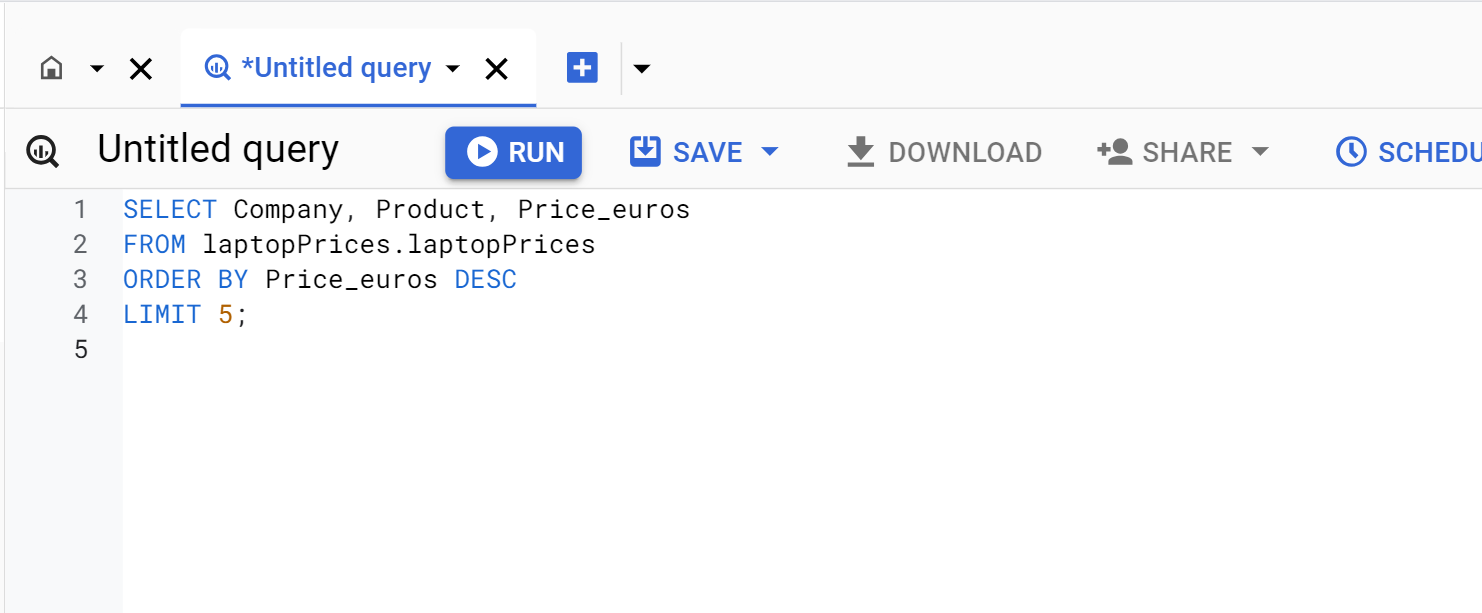
Output
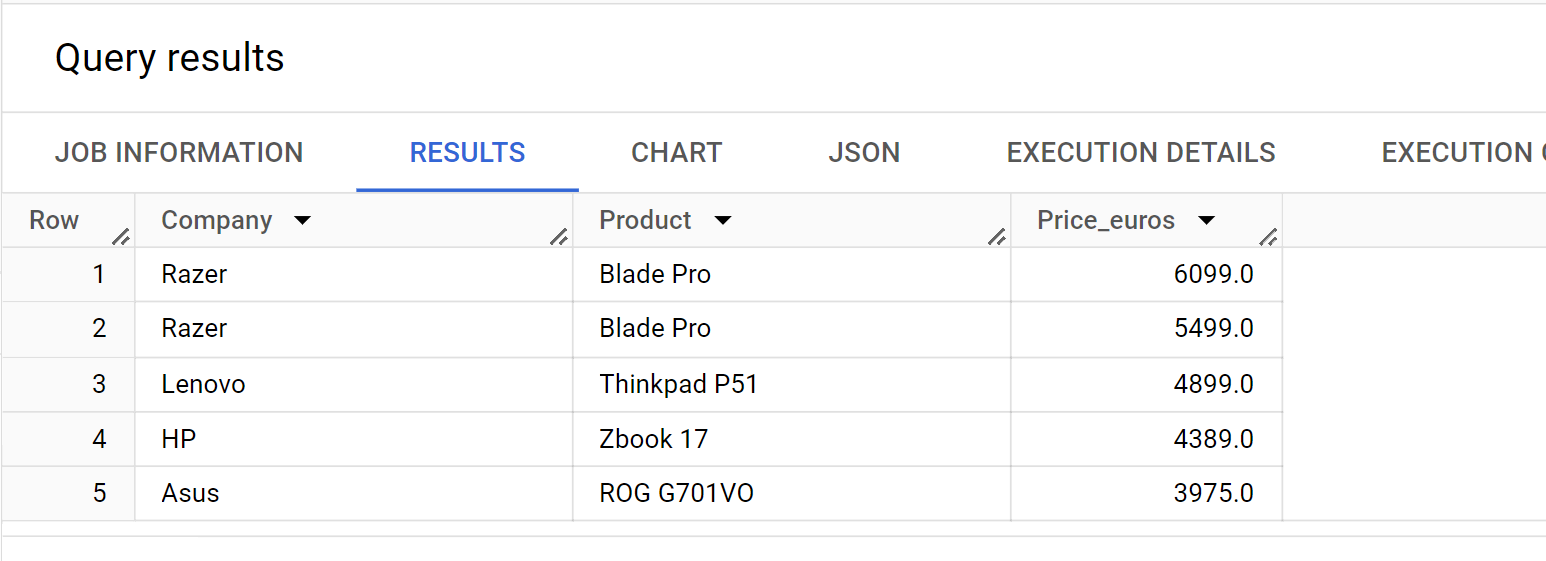
Creating Views
A view is a virtual table that allows you to save a query for reuse. For example, if you often need to check laptops with more than 16GB RAM, you can create a view:
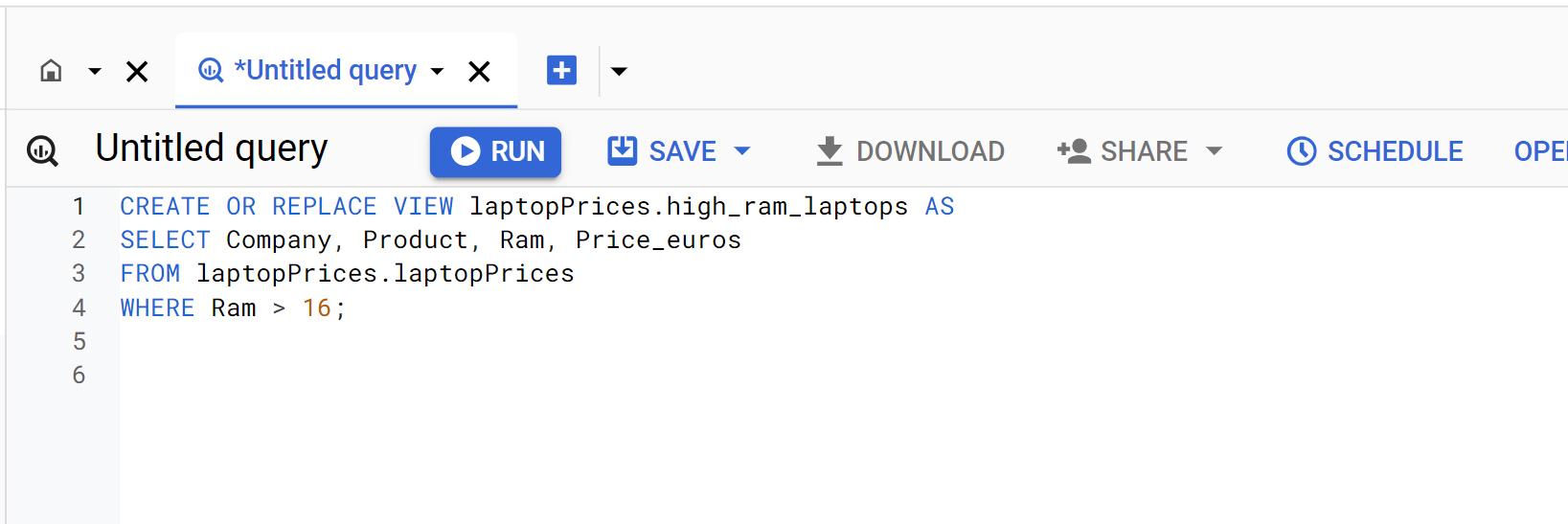
Output
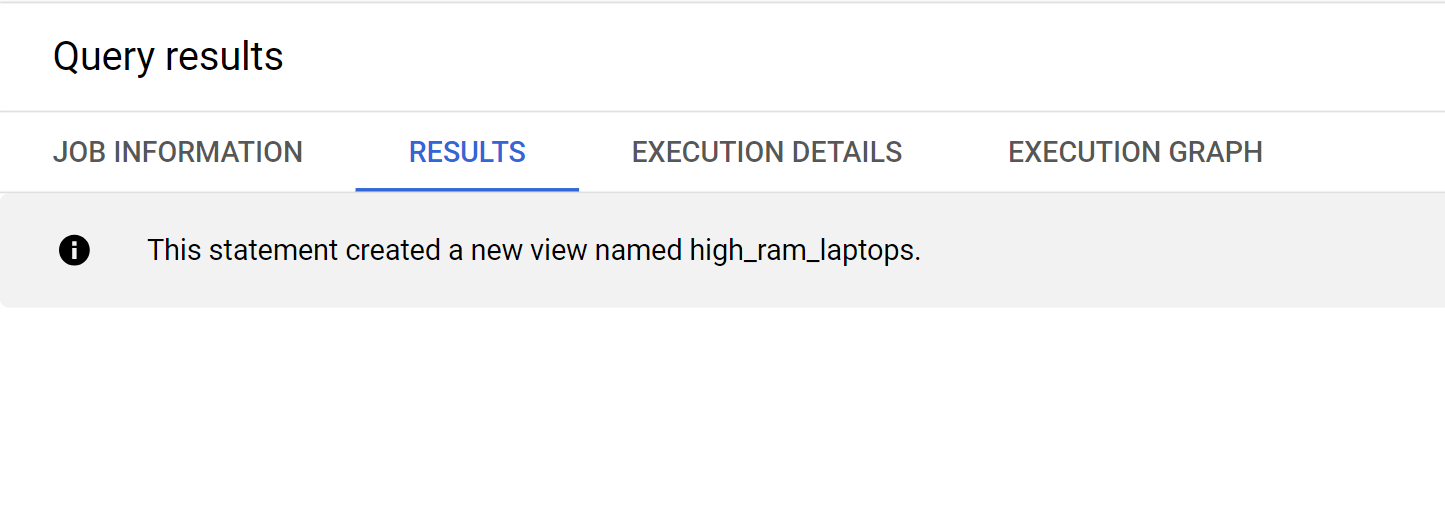
Organizing Data with Schemas
To keep your data organized, store related tables in schemas (also known as datasets). For instance, you could create a schema for different electronics like this:
- laptops_data: Contains all laptop-related tables.
- phones_data: For smartphone-related tables.
2. Designing Partitioned and Clustering Tables
BigQuery allows you to optimize query performance using partitioning and clustering, which are especially useful for large datasets.
Partitioned Tables
Partitioning a table helps break down large datasets into smaller, manageable pieces, typically by date. Since your dataset doesn’t have a date-related column, you can partition by other relevant fields such as Price_euros in buckets (e.g., high, medium, low prices).
Clustering Tables
Clustering allows BigQuery to order your data within a partition, which can significantly speed up queries involving specific columns like Price_euros or Company.
To create a clustered table based on Company and OS:
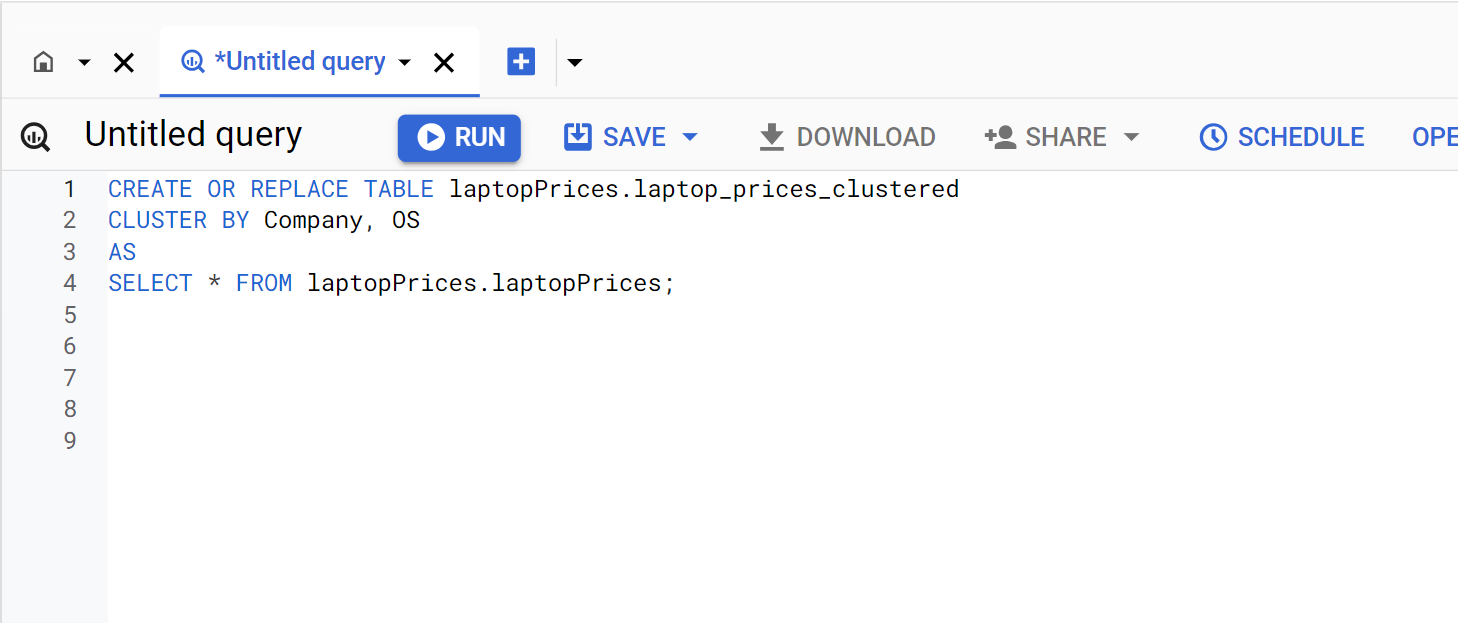
Output

3. Best Practices for Data Modeling in BigQuery
Denormalization
BigQuery is optimized for denormalized (wide) tables. Instead of creating multiple small tables for different laptop attributes (e.g., specs in one table and prices in another), it’s better to store all relevant information in a single, wide table.
For example, instead of splitting laptop_specs and laptop_prices into separate tables, store all fields (Company, Product, Price_euros, CPU, GPU, etc.) in one table. This avoids the need for JOIN operations, which can be expensive in BigQuery.
Use Efficient Data Types
Ensure each field in your table uses the most appropriate data type to save space and optimize performance. In your dataset:- Price_euros should be FLOAT64 (for decimal numbers).
- Ram can be INT64 (for whole numbers).
- Weight can be FLOAT64.
Use Materialized Views for Frequent Queries
Materialized views are precomputed queries, which can be a great way to speed up frequently run queries. For example, to precompute the average price of laptops by company:
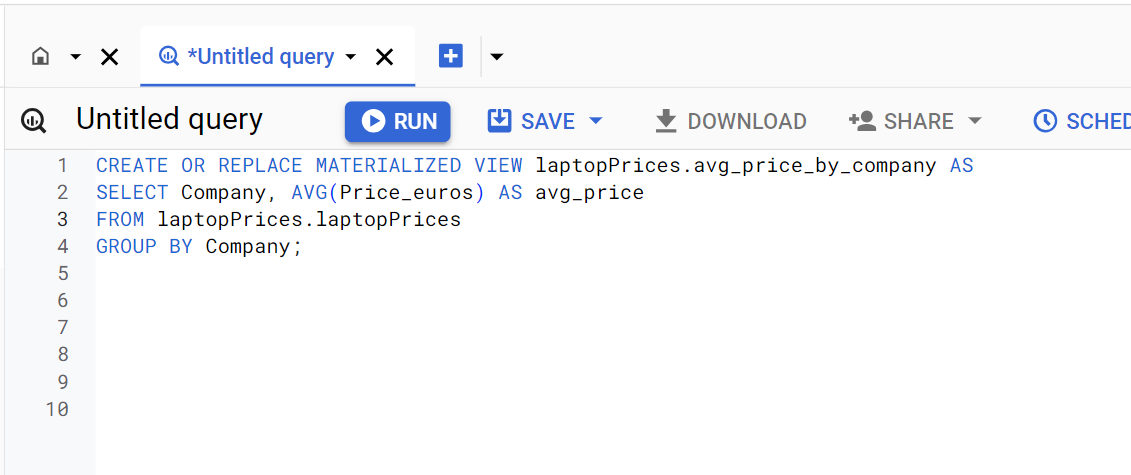
Output
